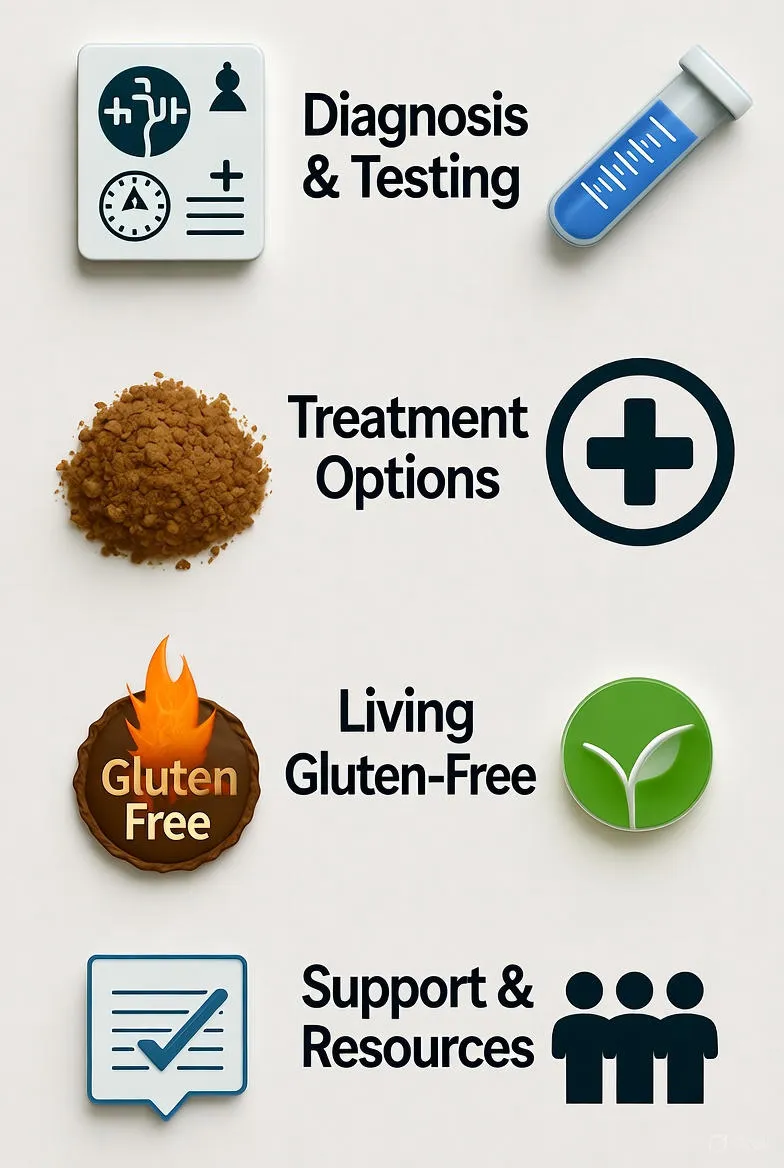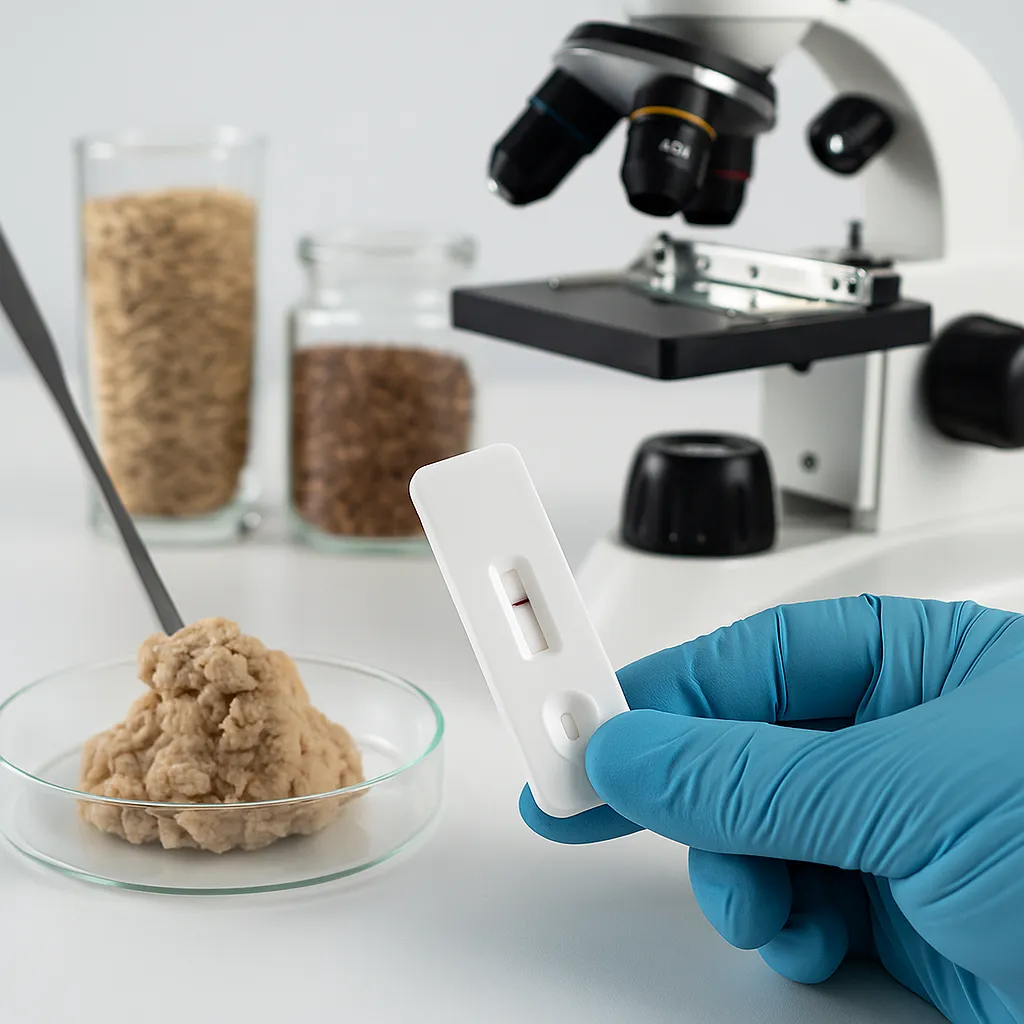Understanding Celiac Disease: A Comprehensive Guide to Diagnosis and Treatment
Explore celiac disease diagnosis through blood tests, biopsies, and genetic screening, plus effective treatments like gluten-free diets and symptom management for long-term health.

Introduction to Celiac Disease
Celiac disease is an autoimmune disorder that affects the small intestine, triggered by the consumption of gluten—a protein found in wheat, barley, and rye. When individuals with celiac disease ingest gluten, their immune system mistakenly attacks the lining of the small intestine, leading to inflammation and damage. This condition impacts approximately 1% of the global population, though many cases remain undiagnosed. The damage to the intestinal villi impairs nutrient absorption, resulting in a wide array of symptoms that can range from gastrointestinal distress to more subtle, systemic issues.
Symptoms of celiac disease vary greatly among individuals. Common gastrointestinal manifestations include chronic diarrhea, abdominal pain, bloating, and weight loss. However, extraintestinal symptoms such as fatigue, anemia, joint pain, osteoporosis, and even neurological issues like headaches or peripheral neuropathy can also occur. In children, growth delays and delayed puberty are frequent concerns. Because of this symptom diversity, celiac disease is often misdiagnosed as irritable bowel syndrome, lactose intolerance, or other conditions, delaying proper treatment and increasing the risk of long-term complications like malnutrition, infertility, and certain cancers.
The importance of early diagnosis cannot be overstated. Untreated celiac disease can lead to serious health issues, including lymphoma and small bowel cancer. Conversely, with accurate diagnosis and adherence to a gluten-free diet—the cornerstone of treatment—most individuals can achieve complete symptom resolution and intestinal healing. This guide delves into the diagnostic process and treatment strategies, empowering readers with the knowledge to navigate this challenging condition.
Recognizing the Signs: When to Suspect Celiac Disease
Identifying celiac disease begins with awareness of its potential signs. For many, the journey starts with persistent digestive woes that don't respond to over-the-counter remedies. Recurrent abdominal discomfort, foul-smelling stools that float due to fat malabsorption (steatorrhea), and unexplained iron-deficiency anemia are red flags. Dermatological clues, such as dermatitis herpetiformis—a itchy, blistering rash on the elbows, knees, and buttocks—occur in about 10-15% of cases and is considered a cutaneous manifestation of the disease.
Beyond the gut, celiac disease can masquerade as other ailments. Women may experience irregular menstrual cycles or infertility, while men might notice erectile dysfunction or reduced fertility. Children often present with failure to thrive, irritability, or enamel defects on teeth. In older adults, who account for a significant portion of new diagnoses, symptoms might be atypical, including osteoporosis or neuropathy. Family history plays a crucial role; if a first-degree relative has celiac disease, the risk increases tenfold. Genetic factors, particularly the HLA-DQ2 and HLA-DQ8 genes, are present in nearly all affected individuals, though not everyone with these genes develops the condition.
If these signs resonate, consulting a healthcare provider is essential. Self-diagnosing or starting a gluten-free diet prematurely can interfere with accurate testing, as gluten exposure is necessary for reliable results. A thorough medical history, physical examination, and targeted screening can pave the way for confirmation.
The Diagnostic Journey: Step-by-Step Process
Diagnosing celiac disease involves a multi-step approach combining serological tests, genetic screening, endoscopy with biopsy, and sometimes capsule endoscopy. The process is designed to be non-invasive where possible, minimizing patient discomfort while ensuring precision.
Serological Blood Tests: The First Line of Defense
The diagnostic odyssey typically commences with blood tests to detect antibodies produced in response to gluten. The most reliable marker is tissue transglutaminase IgA (tTG-IgA), which boasts a sensitivity and specificity exceeding 95% in symptomatic individuals. For those with IgA deficiency—a condition affecting about 2-3% of celiac patients—an IgG-based test or total IgA level is recommended to avoid false negatives.
Additional antibodies, such as endomysial antibodies (EMA) and deamidated gliadin peptides (DGP), may be assayed for confirmation, especially in children or those with equivocal results. These tests require the patient to be consuming gluten—typically equivalent to two slices of bread daily for six weeks prior—to provoke an immune response. Positive serology prompts further investigation but is not definitive alone, as other autoimmune disorders can yield similar results.
Endoscopy and Biopsy: Confirming Intestinal Damage
When blood tests are positive, upper endoscopy (esophagogastroduodenoscopy or EGD) is performed under sedation. This procedure allows visualization of the duodenum and collection of small tissue samples via biopsy forceps. Histological examination reveals characteristic changes: villous atrophy, crypt hyperplasia, and intraepithelial lymphocytosis—collectively known as Marsh classification stages 1-3.
Multiple biopsies from different duodenal sites are crucial, as patchy involvement can lead to sampling errors. The gold standard remains the Marsh 3 lesion, indicating total villous blunting. This invasive step, though, is pivotal for ruling out mimics like Crohn's disease or infections.
Genetic Testing: Ruling Out or Assessing Risk
HLA gene testing identifies DQ2 or DQ8 alleles, absent in 99% of celiac patients. A negative result effectively excludes the disease, useful in low-probability cases or to reassure family members. However, positivity does not confirm diagnosis, as up to 30-40% of the general population carries these genes without developing celiac disease. This test is particularly valuable in seronegative suspected cases or for monitoring at-risk relatives.
Emerging Diagnostics: The Role of Technology
Research is advancing non-invasive options. Point-of-care tests, like finger-prick tTG assays, offer rapid results in primary care settings. Video capsule endoscopy visualizes the small bowel remotely, detecting subtle lesions missed by standard scopes. Gluten immunogenic peptides (GIP) in urine or stool are being explored as compliance markers post-diagnosis, detecting hidden gluten exposure.
Despite these innovations, the traditional pathway—serology followed by biopsy—remains the cornerstone, endorsed by bodies like the American College of Gastroenterology and the European Society for Pediatric Gastroenterology, Hepatology, and Nutrition.
Treatment Strategies: Embracing a Gluten-Free Lifestyle
Treatment for celiac disease is straightforward yet lifelong: strict adherence to a gluten-free diet (GFD). This eliminates gluten entirely, allowing intestinal repair and symptom abatement. Within weeks, many report reduced bloating and fatigue; full villous recovery can take months to years, depending on age and damage extent.
Navigating the Gluten-Free Diet: Practical Tips
A GFD excludes wheat, barley, rye, and derivatives like malt or brewer's yeast. Oats are safe if certified gluten-free, avoiding cross-contamination. Reading labels is paramount—'gluten-free' certification ensures under 20 ppm gluten, per FDA standards. Fresh fruits, vegetables, meats, dairy, and rice-based products form the diet's foundation.
Challenges abound: hidden gluten in sauces, soups, or medications; cross-contamination in shared kitchens; and social dining hurdles. Dietitians specializing in celiac disease provide invaluable guidance, crafting meal plans and identifying safe alternatives like quinoa, buckwheat, or almond flour. Nutritional supplements address deficiencies—iron, vitamin D, B12, and folate are common targets.
Pharmacological Support: Beyond Diet Alone
While no cure exists, medications manage symptoms or complications. Steroids like budesonide treat refractory cases unresponsive to GFD. Probiotics may alleviate IBS-like symptoms, though evidence is mixed. For dermatitis herpetiformis, dapsone offers rash relief alongside GFD.
Enzyme supplements, such as glutenases, aim to break down trace gluten but are not substitutes for avoidance. Vaccine trials, targeting T-cell responses to gluten, hold promise for future desensitization, but remain experimental.
Monitoring and Follow-Up: Ensuring Long-Term Success
Post-diagnosis, annual check-ups track serology, nutritional status, and bone density. Repeat biopsies are reserved for non-responders. Antibody normalization signals adherence; persistent elevation prompts gluten exposure investigation.
Refractory celiac disease, rare (1-2%), requires immunosuppression. Associated conditions like autoimmune thyroiditis or type 1 diabetes necessitate vigilant screening.
Living Well with Celiac Disease: Holistic Management
Beyond diagnosis and treatment, thriving with celiac disease demands a holistic approach. Support groups, such as those from the Celiac Disease Foundation, foster community and share coping strategies. Mental health support addresses the emotional toll of dietary restrictions and chronic illness stigma.
Educating family and friends about cross-contamination—using separate toasters or color-coded utensils—eases daily life. Travel preparations include packing safe snacks and researching gluten-free eateries via apps like Find Me Gluten Free.
Exercise and stress management enhance gut health; yoga or mindfulness can mitigate flare-ups. For parents, advocating for school accommodations ensures children eat safely.
Conclusion: Hope on the Horizon
Celiac disease, though incurable, is eminently manageable. Timely diagnosis via serological and biopsy confirmation, coupled with unwavering GFD commitment, transforms lives. As research progresses—unraveling microbiome roles or developing oral therapies—the outlook brightens. For those suspecting celiac disease, the path to wellness starts with a simple conversation with a healthcare provider. Armed with knowledge, individuals can reclaim vitality, proving that gluten's grip need not define their future.
This comprehensive overview underscores the multifaceted nature of celiac disease. From subtle symptoms to sophisticated diagnostics and empowering treatments, understanding empowers action. Remember, healing begins with awareness.


